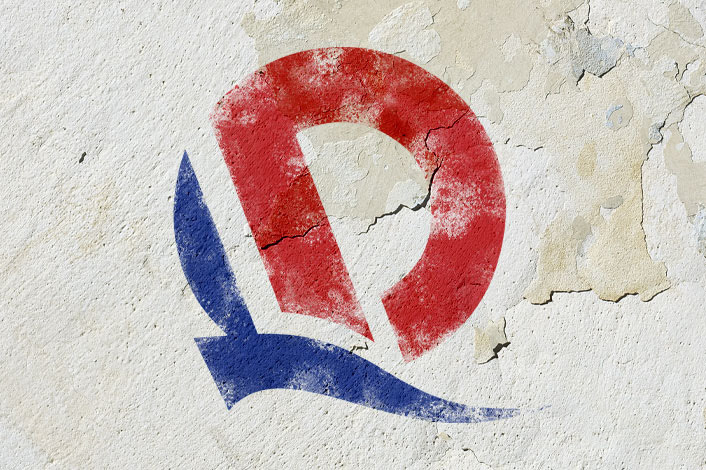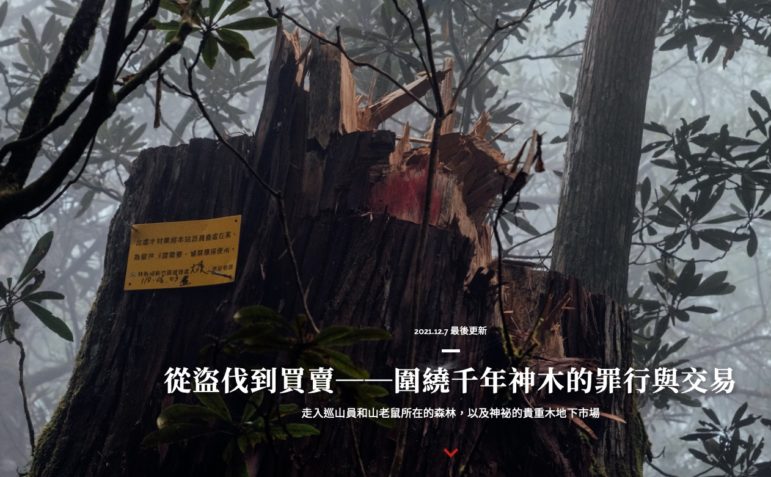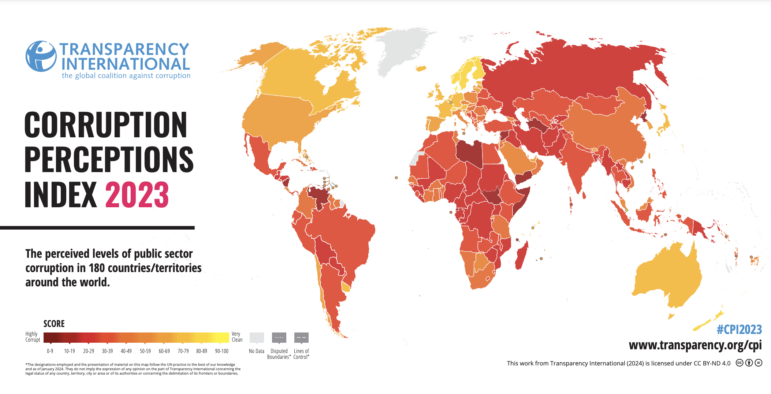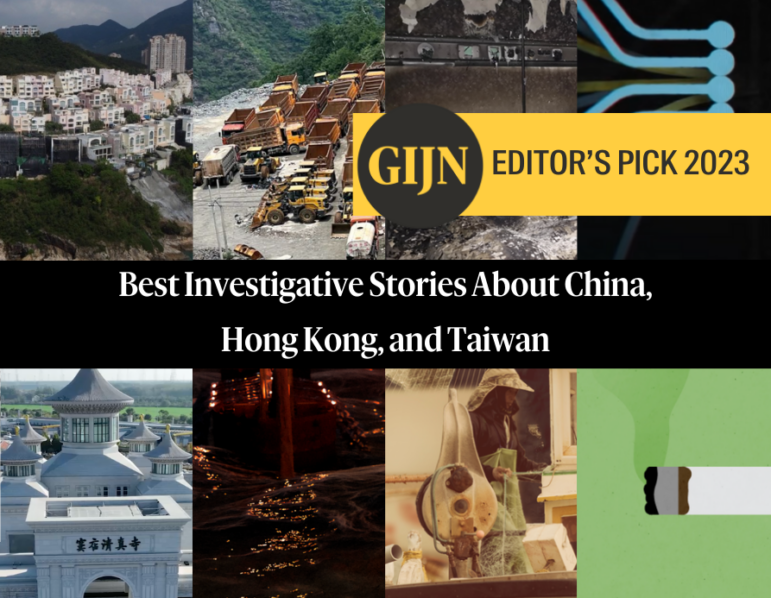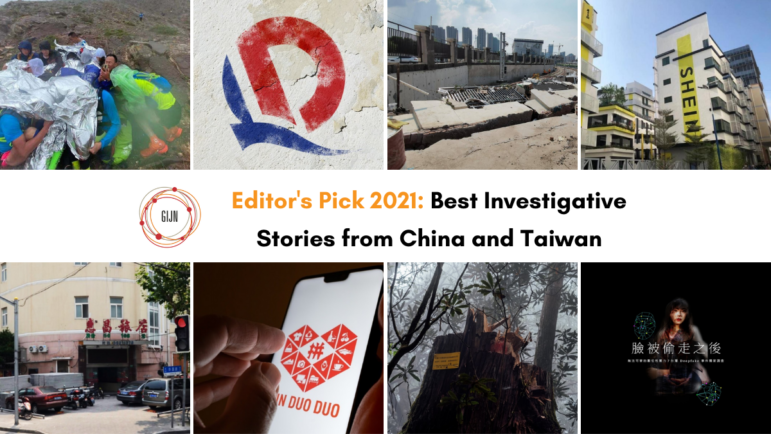

Editor’s Pick: 2021’s Best Investigative Stories from China and Taiwan
Read this article in
 This was a tough year for Chinese journalists. China ranked fourth from the bottom in Reporters Without Borders’ World Press Freedom Index in 2021 and remains the world’s most prolific jailer of journalists for the third year in a row, with 50 reporters now behind bars. In the name of pandemic prevention, the Chinese government has exploited high-tech methods to greatly tighten its control and journalists are among the key people being watched. According to the BBC, the Chinese province of Henan is building a surveillance system with face-scanning technology that can detect journalists and other “people of concern.” Under this system, journalists would be classified by a “traffic-light” system — green, amber, and red. Ominously, journalists judged to be in the “red” category would be “dealt with accordingly.”
This was a tough year for Chinese journalists. China ranked fourth from the bottom in Reporters Without Borders’ World Press Freedom Index in 2021 and remains the world’s most prolific jailer of journalists for the third year in a row, with 50 reporters now behind bars. In the name of pandemic prevention, the Chinese government has exploited high-tech methods to greatly tighten its control and journalists are among the key people being watched. According to the BBC, the Chinese province of Henan is building a surveillance system with face-scanning technology that can detect journalists and other “people of concern.” Under this system, journalists would be classified by a “traffic-light” system — green, amber, and red. Ominously, journalists judged to be in the “red” category would be “dealt with accordingly.”

In 2021, China continued to rank among the worst nations in the world for press freedom. Image: Reporters Without Borders
Despite these challenges, Chinese journalists continued to produce outstanding investigations. These included a deep dive into the financial crisis of Evergrande, one of China’s largest property developers; an ultramarathon that led to the deaths of 21 racers; a flawed, subway water inlet design that killed 14; the abuse of overtime work by Chinese internet companies; and a corrupt network tying together organized crime and local officials.
The eight outstanding investigations from the region that we curated for this 2021 list show the resilience needed to pursue accountability stories in China. Journalists often need to select topics and interviews with extreme care to avoid being harmed or even killed. For example, the reporter who investigated a dangerous water inlet to a subway line in Zhengzhou had to scale a fence and sneak past security guards to gather the evidence he needed. At one point, he was chased, and had to pass photos and videos to his editor while on the run — just to ensure the evidence wouldn’t be confiscated.
This willingness to get the truth out illustrates the courage and dedication of China’s watchdog reporters.
In addition to the stories from mainland China, we also selected two investigations from Taiwan: an investigation into the deepfake industry, and an exposé on illegal logging of protected hinoki trees. The press enjoys much greater freedom in Taiwan, and, as a result, both pieces are outspoken in their criticism of the loopholes in Taiwan’s legal system and other systemic injustices. They allow us to see how investigative journalism can contribute to social progress in a democratic and open society.
How Evergrande Could Turn Into “China’s Lehman Brothers”
Heavily indebted China Evergrande Group, one of the country’s largest property developers, is suffering a liquidity crisis whose effects are reverberating through China’s economy and markets around the world. Its liabilities are equivalent to about 2% of China’s GDP, it employs more than 200,000 people, and has more than 800 projects under construction — a majority of which are now halted due to the company’s cash crunch. In addition, thousands of upstream and downstream companies rely on Evergrande for business, accounting for roughly 3.8 million jobs.
How did Evergrande get to this crisis point? Starting at the overdue payment of one of Evergrande’s financing products, this investigation by Caixin — a financial and business news media platform based in Beijing, known for investigative journalism — explored the huge debt fueling the company’s rapid growth. It also interviewed Evergrande’s employees and executives, as well as real estate and financial industry insiders, to paint a picture of the firm’s mounting problems.
“Ran for Our Lives”: A Deadly Ultramarathon Killed 21 Runners
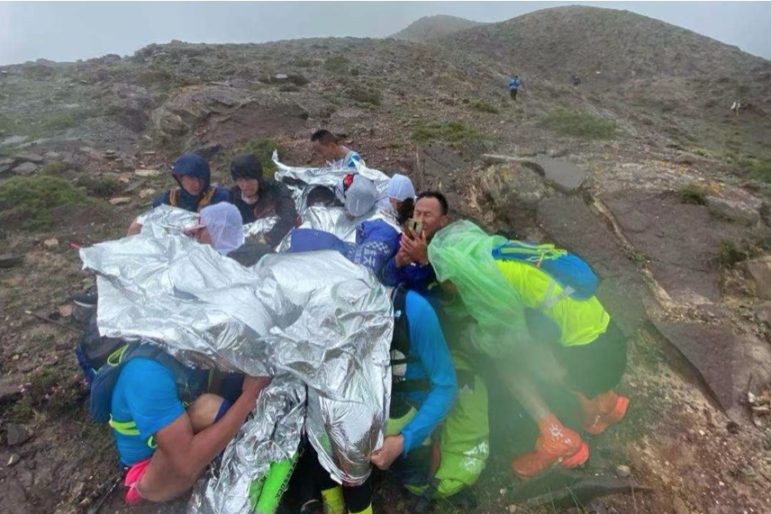
Participants of the 2021 Yellow River Stone Forest 100-kilometer cross-country race huddle for warmth with a rescuer during a winter squall. Image: Screenshot
In May 2021, a 60-mile ultramarathon held in Northwest China was hit by a brutal cold front marked by plunging temperatures, snow pellets, and fierce winds. The race’s inexperienced organizers didn’t respond to the participants’ pleas for help in time, leading to 21 people dying of exposure on the trail.
The number of deaths shocked the international running community. An official investigation released a report a month later, blaming the organizers and calling out their “unregulated management and unprofessional operation.” This Wall Street Journal report, by a Chinese journalist, relied upon the official inquiry, satellite data, and interviews with the survivors and family members of race victims. The story reconstructed the event to show it was poorly organized and failed to take necessary safety precautions. And it found race officials were unprepared and woefully unresponsive, even after the weather conditions became dangerous.
Zhengzhou Metro Line 5 Retaining Wall Collapse
In July 2021, the central Chinese province of Henan experienced days of torrential rain. The province’s capital, Zhengzhou, was one of the worst affected areas. The downpour triggered flooding that caused the collapse of a water inlet retaining wall at a subway parking lot, killing 14 people.
This exposé of the parking lot catastrophe by Red Star News — an online news outlet based in Chengdu, Sichuan — involved a full range of one-on-one interviews with residents and workers in the area, research, and field visits (including an episode of trespassing that culminated in a foot race to flee security guards). It revealed even more breaches in the wall, and temporary construction fences that were far too weak to withstand heavy rains.
In addition, Red Star News also obtained government documents showing that, 10 years before the parking lot was built, the area was on Zhengzhou’s “black list” for water drainage problems.
The Downfall of Shanghai’s “Little Red House”
Chinese underworld kingpin Zhao Fuqiang turned his Shanghai “Little Red House” into a hell-on-Earth for dozens of women who were forced into a life of sex work — and local officials protected this criminal network for nearly 20 years.
That’s according to a bombshell Caixin report that revealed a criminal network with deep ties to local political officials. Its findings were so embarrassing to some in power that the story has been targeted by government censors. According to Caixin, Zhao would lure women to the brothel for “job interviews,” sometimes raping them, forcing them to have sex with his clients, and threatening to make public videos and photos of these encounters, should they try to leave. He also forcibly harvested their eggs and sold them on the black market, leaving at least one woman infertile due to botched procedures. In addition, he invited high-level government and business people to visit the “Little Red House,” then used security cameras to secretly record them, potentially serving as blackmail material. At the end of 2020, Zhao was sentenced to death with a two-year reprieve, based on 10 charges that included rape, bribery, and fraud.
Why Are Pinduoduo Employees Committing Suicide?
In January 2021, Xiao Tan, a promising young employee of China’s e-commerce giant Pinduoduo (PDD), committed suicide by jumping from his 27th floor apartment. Just 10 days earlier, a 22-year-old PDD female employee, Zhang, died suddenly on her way home from work at 1 a.m.. These back-to-back incidents raised concerns about a culture of overtime abuse at China’s internet companies.
These tech companies are renowned for their high wages, which attract large numbers of young people. But the working hours are very long, as exemplified by the grueling “996 working hour system,” which gets its name from the expectation that employees work 9 a.m. to 9 p.m., six days per week. This story, by Esquire China — told through interviews with Tan’s peers and colleagues — captured the dramatic changes in Tan’s life before and after he joined PDD. From Tan’s life trajectory, we also get a glimpse of the brutal, daily routine of employees in high-tech companies who lack legal and social protections. It’s a culture where early-morning overtime and just two days off per month are the norm, company surveillance is omnipresent, and employees have to hide in the bathroom to take a long break.
Uncovering Shein
In 2020 and 2021, Shein, an international “fast-fashion” e-commerce company, earned glowing coverage in China’s business press, as fans labeled it a local version of Spanish apparel giant ZARA. Some called it “China’s most mysterious $10 billion company.”
But what was really going on beneath the impressive publicity and claims of wild success? Qingliu Studio, a news portal under Chinese Internet giant NetEase, launched an investigation and found that Shein’s annual revenue was, in fact, far below what was reported. By using multiple public commercial databases and social media, this story is a great example of open source journalism. The story uncovered the history of Shein’s founder, Xu Yangtian, and dispelled the public relations myths propping up the company’s profile by listing the real facts and figures. Along the way, the investigation also highlighted the flamboyant mess that is Chinese commercial media, and its complicity in corporate dishonesty.
Investigating Taiwan’s Deepfake Industry (Taiwan)
As deepfake pornography has grown more popular in Taiwan, there have been hundreds of victims falsely portrayed in these digitally manipulated clips. But many of these victims have chosen to remain silent, due to fears of disgrace and retaliation. How does a fake video cause real harm to the victim? Why do the laws in Taiwan fail to address this kind of abusive behavior? And what can victims do to restore their reputation?
Mirror Media, a Taiwan news outlet, took six months to look into these questions and track down the deepfake video sellers behind this illicit industry. The project interviewed six victims and revealed how the deepfake production chain operates with impunity because of Taiwan’s judicial loopholes.
Criminal Trade in Protected Hinoki Trees (Taiwan)
Taiwan is the only region where hinoki (Taiwan cypress) forests grow in the subtropics. Because of their hardness and unique aroma, hinokis were the target of numerous logging campaigns over the years until 1993, when a total ban on harvesting the trees was imposed.
However, the few remaining hinoki trees still face threats from illegal logging. Despite government efforts to enhance enforcement, it’s still difficult to stop lumber poachers. More than 200 annual incidents of illegal logging have been documented in recent years, causing incalculable ecological loss.
How does this mysterious illicit market for precious hinoki wood operate? Who are the tree poachers? What are the challenges faced by the frontline forest rangers? And how should national policies and regulations evolve with the times? Nonprofit news site The Reporter, a GIJN member, dug into the underground trade, helping readers understand the ongoing environmental crisis deep in the forest, and the structural factors behind it.
Additional Resources
6 Tips When Investigations Lead to China
Interrogating China’s “Google Maps” to Investigate the Xinjiang Detention Centers
Editor’s Pick: 2020’s Best Investigative Stories from China and Taiwan
Joey Qi is the editor of GIJN in Chinese. He has over nine years experience in journalism, including three years in media management. He is one of the founding members of The Initium Media, where he designed the daily news section and built the team.





